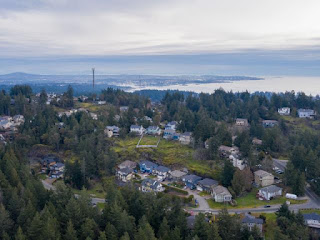The Westhills area along the southwest shoreline of Langford
Lake is well known for a massive construction project by the same name which to
date has built more than 3000 new homes since its inception in 2008.
The developers and builders - The Westhills Land Corp. and Keycorp
Consulting - are committed to constructing environment-friendly,
energy-efficient residences to BUILT GREEN® standards. They are even using
geothermal equipment to aid home heating and cooling.
The community is made up of condominiums, duplexes,
single-family homes, and high rises. Two retail centres and sports fields
provide a wide variety of amenities and attract local teams for the
neighbourhood to enjoy. Close by, Langford Parkway features community amenities
such as hockey, soccer, rugby, bowling, mini golf, indoor playground, roller
skating, roller skating and more. The YMCA’s new facilities features swimming,
weight rooms, gyms, dance floors and a variety of community programs.
A new Belmont Secondary School supporting 1,200 students
opened on September 8, 2015 which supports wide range of programs, including
expanded students' skills and trades training. Additional programs include global
and intercultural skills, French immersion and even robotics.
Westhills has already attracted hundreds of young families
due to its beautiful, west coast suburban environment, amazing community
amenities within the bustling Langford lifestyle.




